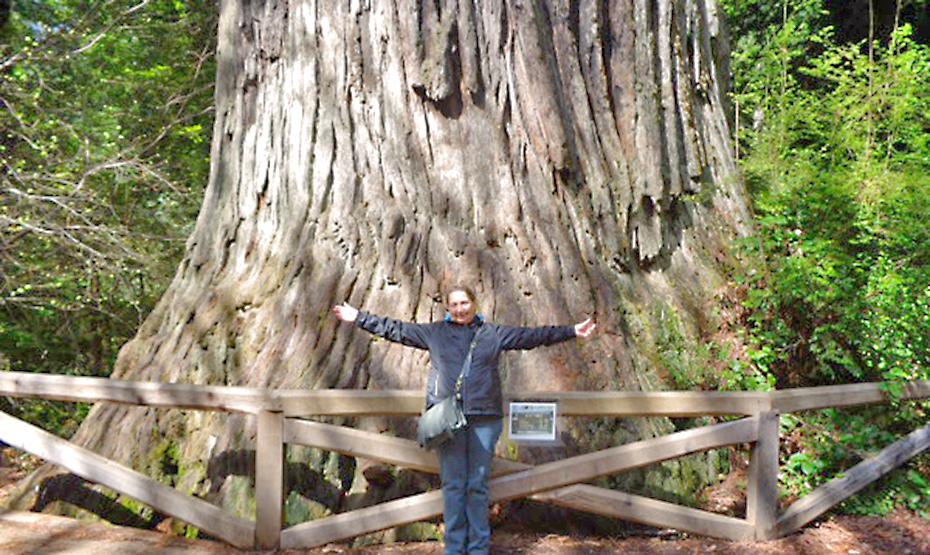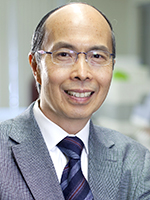
“I say yes to participating in research because early detection made a huge difference for me.”
– Joanne, Vancouver
A glance at a bulletin board in her GP’s waiting room changed everything for Vancouver resident Joanne. Last year, while waiting for an appointment, the 62-year-old noticed a poster advertising a lung cancer screening trial. Although she had no symptoms of lung cancer, the retired federal government employee knew she was at high-risk of developing the disease and decided to participate. Joanne's mother had died from lung cancer and Joanne is a former smoker.
“I feel so lucky that I pulled that little tag off in the doctor’s office. So very, very lucky.”
A CT scan—part of the study screening protocol—found a tumour. It was small enough to be surgically removed. Now Joanne's outlook, like most patients whose lung cancer is found at an early stage, is very good.
“I feel like someone was watching out for me. If I had not seen that notice, if I had not been part of the trial, my cancer would not have been detected as early, and my outcome would have been very, very different.”
Vancouver Coastal Health research scientist Dr. Stephen Lam is the principal investigator of the International Lung Screen Trial. Lam says the study aims to determine the best way to identify high-risk patients like Joanne.
“ We know that with lung cancer we can actually reverse outcomes with proper early detection. Without screening, three quarters of lung cancers found are in an advanced stage and incurable. With screening, three quarters of cases are in early stage that is potentially cured by surgery.”

The challenge comes down to how to screen effectively for lung cancer, and particularly how to identify the group of high-risk patients. In the United States, anyone between 55 and 77 with a long history of smoking is recommended for an annual screening. Lam and his colleagues have refined those criteria. “We are already finding more cases of lung cancer than in the American screening model using a risk prediction tool. And we are able to sift out who does not need annual screening based on the participant’s initial CT scan.”
Lam’s risk prediction tool factors in gender, socio-economic status, family history, chronic obstructive pulmonary disease and body mass index. And he is gathering data on exposure to air pollution and genetic susceptibility. Having all this information will enable even more precise screening in the future.
The stakes are very high. Lung cancer is the number one cause of death worldwide. Each year in British Columbia, 3,500 new cases are diagnosed and about 2,400 people die from the disease.
Lam says more effective risk screening not only helps a higher number of patients, it generates huge savings.
“Early diagnosis typically means we can stop the cancer with a surgical intervention costing about $20,000. If lung cancer progresses to stage three or four, then surgery is not an option. Instead we have to use chemotherapy, targeted therapy or immunotherapy. The newer drugs can cost over $100,000 per year and are mostly palliative.”
Joanne says being a participant has been a good experience. “Everyone I dealt with—from the administrators, to the doctors and the surgeon—were all so kind and explained everything really clearly. They are dedicated to research and to finding answers. As a participant, you get treated very, very well.”
A typical participant will have about two low-dose CT scans over the course of the five-year study. Because Joanne was found to have cancer, she will have more intensive follow-up appointments every six months. But she says the appointments are quick and painless. Even her surgery was easier than she expected. “I was up and about within days. To be honest,” she laughs, “it was less complicated and an easier recovery than when I had rotator cuff surgery.” Joanne's experience has also made her keen to take part in other studies.
Lam hopes more high-risk people will sign up for the International Lung Screen Trial. Eligible participants are individuals between ages 55 and 80 who have smoked for more than 20 years. Even if they no longer smoke, they are still high-risk and still eligible.
To date, more than 300 participants have enrolled in BC, which is one of several international sites. Lam is aiming for about 2,000 participants.
Call 604-675-8088 or visit the website for more information about the study.
*Name has been changed to protect patient anonymity.
THIS IS ONE PATIENT’S STORY OF PARTICIPATING IN A CLINICAL TRIAL. YOUR EXPERIENCE MAY DIFFER. LEARN MORE ABOUT CLINICAL TRIALS BEFORE PARTICIPATING.


